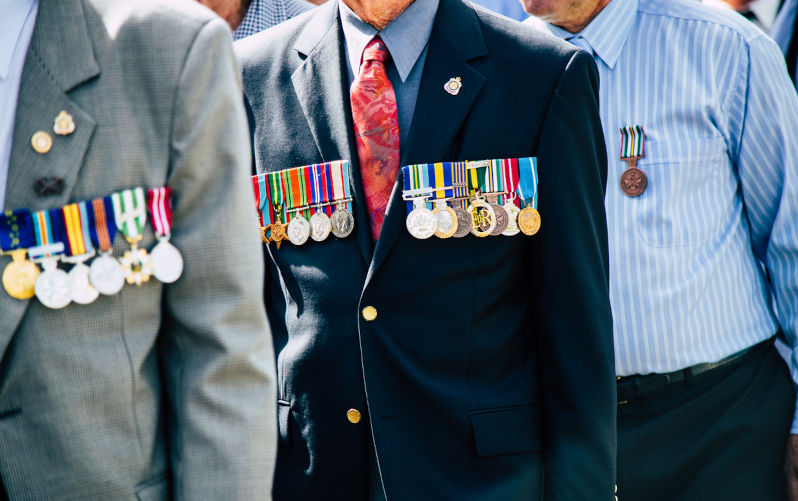The VVV Vietnam Veterans' Vigil, 3 August 2023
August 3, 2023
The 3 August Vietnam Veterans’ Vigil (VVV) is separate from the 18 August government-sponsored Commemorative Service on Vietnam Veterans’ Day.
The 18 August Service officially marks the fiftieth anniversary of Australia’s withdrawal from the Vietnam War (1962-72). The 3 August Vigil falls after the sixtieth anniversary of the Australian Army Training Team’s arrival in Vietnam in 1962 and is initiated by the veterans with a more intimate purpose. Rather than be a national event, it will emphasise individual loss at the death of a loved one, a son, a husband, or a father in the Vietnam War.
Co-ordinated by Vietnam veteran Jack Thurgar, who was later decorated for bravery as a peacekeeper in Cyprus, VVV is widely supported by individuals, some RSL Branches, Battalion Associations, Vietnam Veterans’ organisations, and the Australian War Powers Reform Group. The Vigil will commence at 11.00 hours, when its organisers nation-wide envisage that surviving veterans, family members, or friends will visit the graves of all 523 soldiers who were killed or died on active service in Vietnam.
What does this commemorative separation mean?
The views of Vietnam veterans are not monolithic. Yet their claims for recognition of their war service are complicated by the fact that, for the first time in the ANZAC tradition, their war did not to end with some semblance of ‘victory’. Saigon fell on 30 April 1975, separating Australia’s involvement in that war from any previous conflict.
Jack Thurgar refers to the self-serving ‘rubbish’ that underpinned Australia’s involvement. Graham Edwards, the VVV’s Patron in Western Australia is also acutely aware of this. ‘Stumps’, as he is known to his friends, lost both his legs on an M16 mine in Vietnam before becoming a minister in WA and later a federal parliamentarian.
Many veterans realise that, in Jack’s words, ‘Saigon fell and neither the Chinese nor Vietnamese communists came down’ towards Australia. He means the non-event that sank Prime Minister Menzies’ explanation on 29 April 1965 of why Australian troops had to be in Vietnam to support American forces. The war in southern Vietnam threatened Australia, Menzies declared, ‘as part of a thrust by communist China between the Indian and Pacific oceans’.
But Vietnam was not China. Also, strategic intelligence had informed the government in 1964 that China did not have the power to invade Australia.
No better example of the need for reform of how Australia goes to war may exist than Menzies’ destructive strategic fiction and fantasy. As Australian War Powers Reform (AWPR) supports the Vigil, AWPR is drawing attention to a glaring need to improve our decisions for war by taking them out of the hands of prime ministers working in secret. It believes decisions of such magnitude should be debated democratically in parliament.
Ignoring strategic reality, the government and high command had little idea of who or where their enemy was in Vietnam. Without adequate local intelligence or, initially, equipment, Australian soldiers were blindly sent to suppress a war of national liberation with complex irregular and regular components. Those, plus total strategic dependence on the Americans, placed Australian forces in a dangerous no-win situation, which killed 523 and mutilated and wounded thousands more.
When soldiers came home their experience continued to be framed by the government’s catastrophic incomprehension. In the RSL, some veterans were told they hadn’t been in a war. Then, in the late 1970s and early 1980s, the Department of Veterans’ Affairs (DVA) and Government, which deferred to the RSL, let Vietnam veterans down further in their claims for recognition and assistance.
Agitated organising and marching began around ‘Long Tan Day’, after the battle of that name on 18 August 1966. In June 1985, the Agent Orange Royal Commission finally recommended measures to help veterans. These including calling on the Government to declare a ‘Vietnam Veterans Day’ on 18 August.
Reluctantly or not, the government has appropriated other successful veterans’ initiatives. The 4 October 1987 ‘Welcome Home Parade’ that Jack Thurgar had also helped initiate is another. The DVA later took credit for the event and wrote Jack and his organising committee out of history.
Today, many involved in the VVV remember adversarial encounters, some that provoked suicide, when seeking assistance from the DVA. Many veterans, particularly Dr John Mordike and others, who have deeply researched the matter, know further that the DVA has failed for decades to deal with the crucial issue of saturation spraying of the Australian base in Vietnam at Nui Dat with deadly pesticides.
Vietnam veterans remember Iraq. Kabul fell on 21 August 2021. A month later, the surprise AUKUS announcement rang loudly for many with the deadly Menzies fiction of 1965 about communist China ‘coming down’. Soldier suicides and war crimes are in the air.
Lest we forget democracy. As AWPR seeks more accountable decisions for war in association with the VVV, the very fact of the Vigil points to the need for a more transparent process when it comes to overseas deployments.
Altogether, the meaning of the VVV initiative on 3 August comes through: veterans are perpetuating in their personalised identification with the fallen their deeply informed wariness of government.
First published in The Canberra Times August 3, 2023

